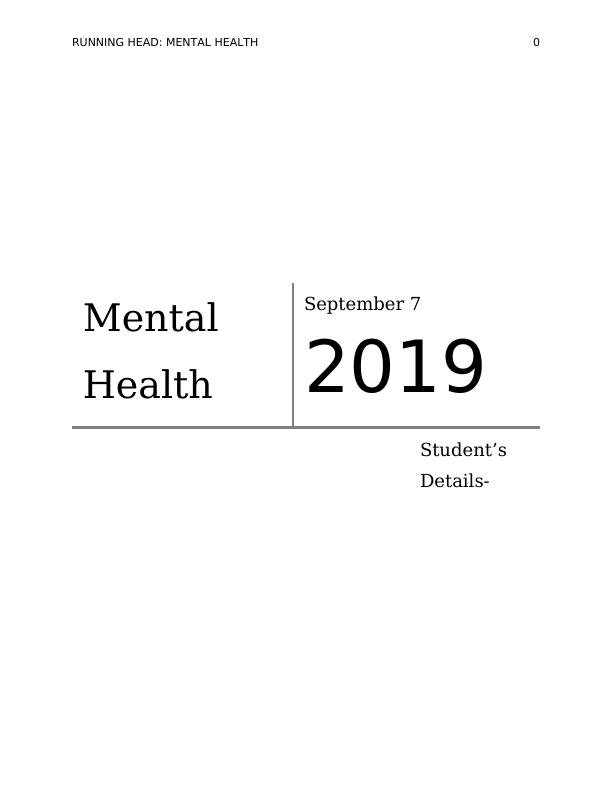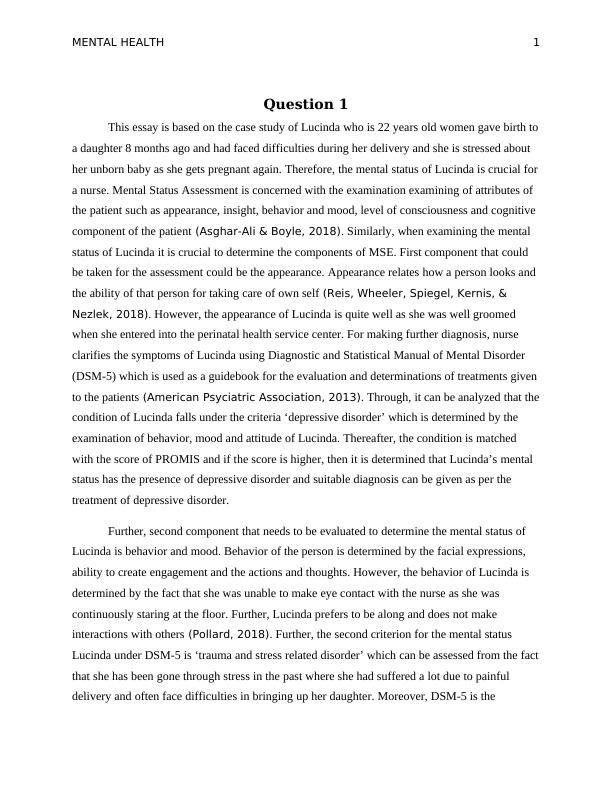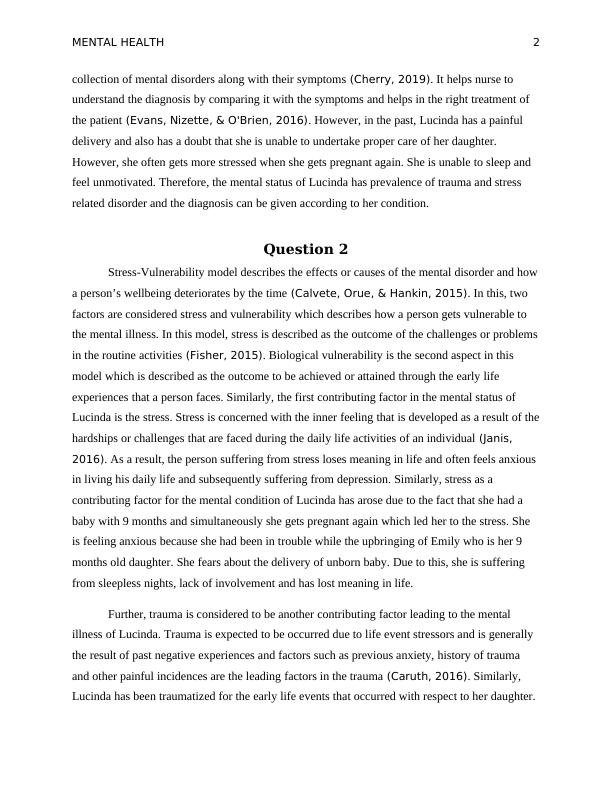Mental Health: Assessment and Recovery
7 Pages2139 Words396 Views
Added on 2022-12-05
About This Document
This essay discusses the mental status assessment of a patient and the recovery-oriented practice for mental health improvement. It focuses on the case study of Lucinda, a 22-year-old woman who has faced difficulties during childbirth and is stressed about her unborn baby as she gets pregnant again. The essay explores the components of the Mental Status Examination (MSE) and the Diagnostic and Statistical Manual of Mental Disorders (DSM-5) for diagnosis. It also discusses the stress-vulnerability model, contributing factors to Lucinda's mental condition, and recovery-oriented practices such as respect, empowerment, and retaining hope.
Mental Health: Assessment and Recovery
Added on 2022-12-05
ShareRelated Documents
End of preview
Want to access all the pages? Upload your documents or become a member.
Promoting Mental Health and Wellbeing
|8
|2767
|1
Promoting Mental Health | Assignment
|9
|2105
|21
Mental Health Assessment: Case Study of Lucinda Okiro
|9
|2526
|4
Mental Illness and its Impact on Perinatal Mental Health: A Case Study
|9
|2399
|108
Examining Mental Health: Components and Principles
|9
|2282
|72
Mental Health Care
|10
|2407
|53



